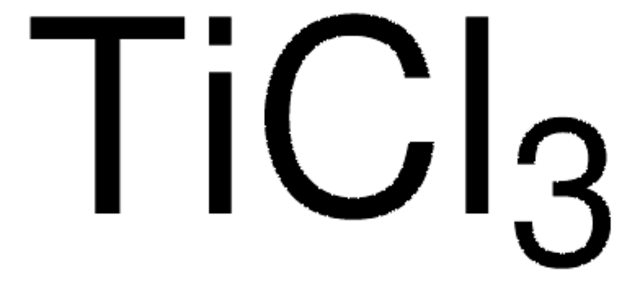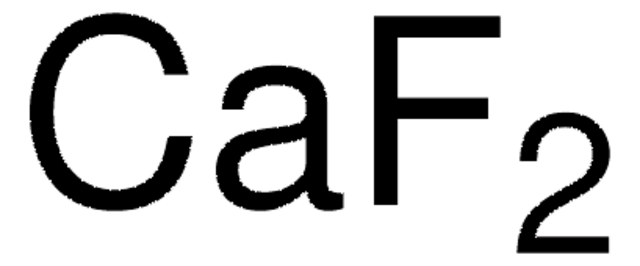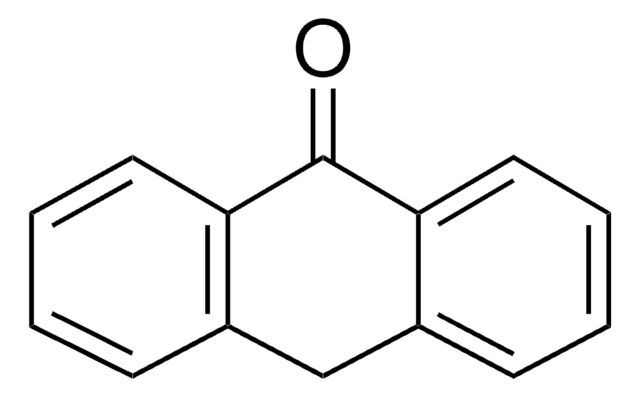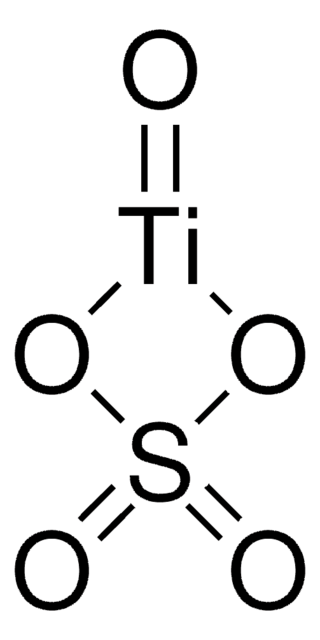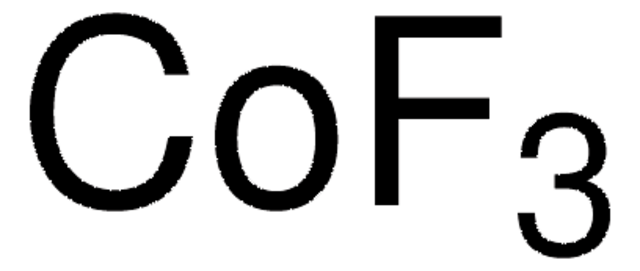Wichtige Dokumente
333239
Titan(IV)-fluorid
Synonym(e):
Titanium tetrafluoride, Titanium fluoride
About This Item
Empfohlene Produkte
Form
powder and chunks
Qualitätsniveau
Eignung der Reaktion
core: titanium
reagent type: catalyst
Dichte
2.798 g/mL at 25 °C (lit.)
SMILES String
F[Ti](F)(F)F
InChI
1S/4FH.Ti/h4*1H;/q;;;;+4/p-4
InChIKey
XROWMBWRMNHXMF-UHFFFAOYSA-J
Anwendung
- Chemoselective synthesis and deprotection of geminal diacetates of aldehydes
Signalwort
Danger
H-Sätze
Gefahreneinstufungen
Acute Tox. 4 Dermal - Acute Tox. 4 Inhalation - Acute Tox. 4 Oral - Eye Dam. 1 - Skin Corr. 1B
Lagerklassenschlüssel
8A - Combustible corrosive hazardous materials
WGK
WGK 3
Flammpunkt (°F)
Not applicable
Flammpunkt (°C)
Not applicable
Persönliche Schutzausrüstung
Eyeshields, Faceshields, Gloves, type P3 (EN 143) respirator cartridges
Hier finden Sie alle aktuellen Versionen:
Besitzen Sie dieses Produkt bereits?
In der Dokumentenbibliothek finden Sie die Dokumentation zu den Produkten, die Sie kürzlich erworben haben.
Kunden haben sich ebenfalls angesehen
Artikel
Titanium dioxide (TiO2) is an important n-type semiconducting material that shows interesting characteristics such as photoswitchable surface wettability, high photocatalytic activity, bistable electrical resistance states and high electron drift mobility.
A Review of Mesoporous TiO2 Thin Films
Unser Team von Wissenschaftlern verfügt über Erfahrung in allen Forschungsbereichen einschließlich Life Science, Materialwissenschaften, chemischer Synthese, Chromatographie, Analytik und vielen mehr..
Setzen Sie sich mit dem technischen Dienst in Verbindung.


